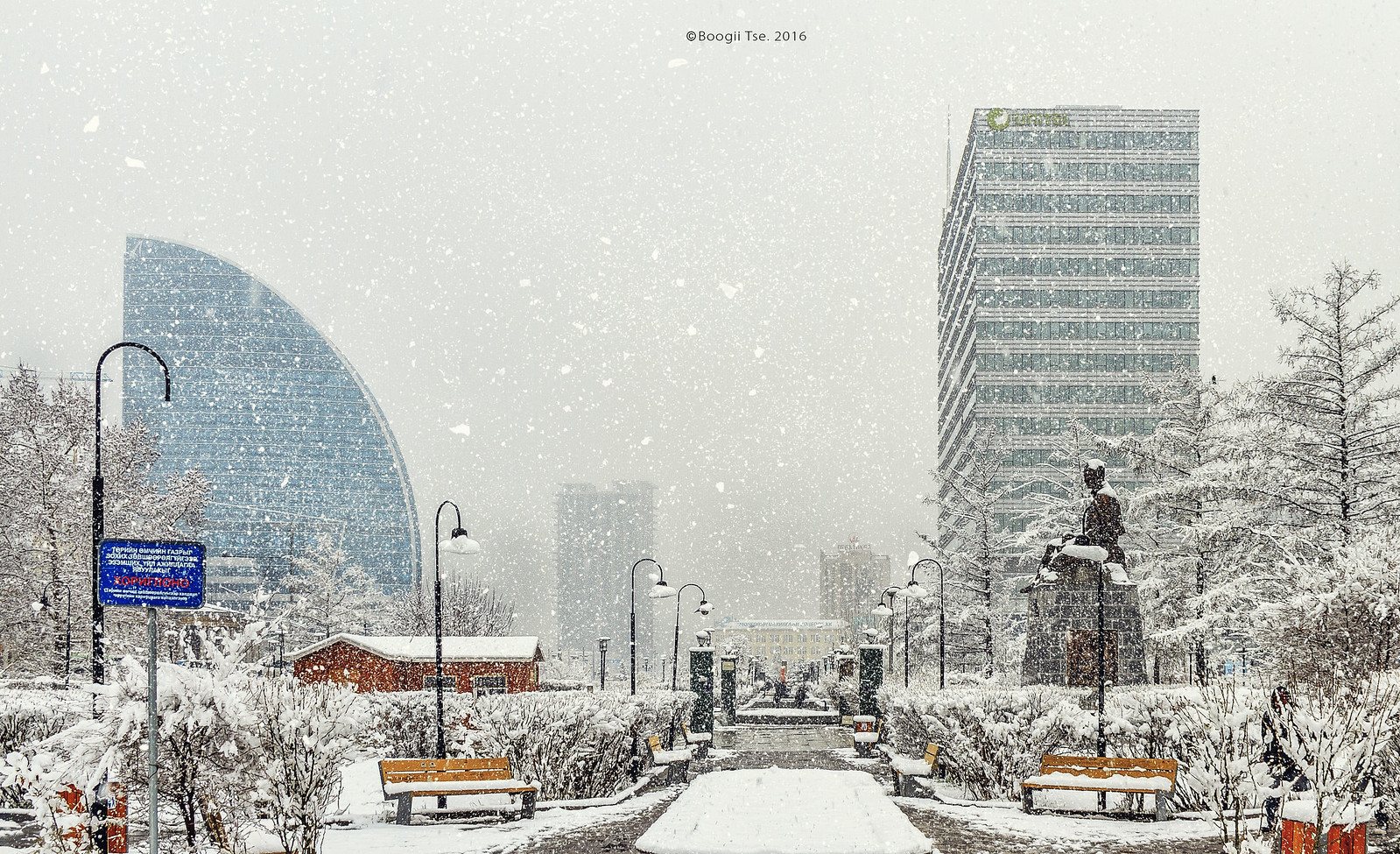Brrr… Why Ulaanbaatar Is More Than Just the Coldest Capital!
Brrr! The cold hits you like a thousand icy needles as you step into Ulaanbaatar, the world’s coldest capital. Your breath freezes in the air, your nose stings, and every step crunches on the frosty streets beneath you. It’s a city where winter isn’t just a season; it’s a lifestyle. But don’t be fooled—while the chill might make you want to curl up inside with a hot drink, Ulaanbaatar is more than just a frozen wonderland. Beneath the biting winds and snow-covered streets lies a vibrant city, bursting with rich history, resilient people, and a culture that has thrived through centuries of extreme weather. So, brace yourself for the cold—and then let it surprise you with its warmth in the most unexpected ways.
A City of Extremes
Ulaanbaatar’s reputation for cold weather is more than just a fun fact—it’s a defining feature of the city. Positioned at an elevation of 1,350 meters (4,430 feet) above sea level, Ulaanbaatar experiences long, bitterly cold winters, with temperatures regularly plunging to -40°C (-40°F) in January. This extreme cold is largely due to its geographical location. The city sits in a valley surrounded by mountains, which creates a natural cold trap. With its continental climate, Ulaanbaatar is often subject to Siberian winds that bring freezing temperatures, making the winters feel even colder.
But it’s not just the frigid winters that set Ulaanbaatar apart; the summer months offer a pleasant contrast. The city sees warmer temperatures, reaching highs of 20-25°C (68-77°F) in July. However, the transitional seasons—spring and autumn—can be unpredictable, with frequent swings in temperature. One moment, the sun is shining brightly, and the next, a sudden snowstorm sweeps in without warning. It’s truly a remarkable experience to witness all four seasons unfold in a single day!
Resilience in the Cold
The people of Ulaanbaatar have adapted to these harsh conditions with remarkable resilience. It’s a city where cold weather is more of a way of life than a nuisance. Local traditions and modern living have merged to create a lifestyle that thrives in the face of freezing temperatures. The Mongolian people are known for their hearty cuisine, and it’s no surprise that the food here is designed to help keep warm. Meals like buuz (steamed dumplings) filled with meat and khuushuur (fried meat pies) are commonly enjoyed, along with plenty of tsai (tea), which is often served with milk and salt for an extra energy boost.
Moreover, Ulaanbaatar’s residents wear clothing that is specially designed for the cold. The traditional Mongolian del, a long, thick robe, is worn by many, particularly in the winter months. The del is made from warm, layered materials, offering excellent protection against the elements. For those living outside the city, yurts (called gers) provide shelter, and these portable homes are surprisingly well-insulated, designed to keep the cold at bay even when temperatures drop well below freezing.
Air Pollution: A Complicated Challenge
While Ulaanbaatar’s cold climate and the warmth of its people are awe-inspiring, the city does face some challenges. One major issue is air pollution, particularly during the winter months. The extreme cold leads many residents to burn coal for heating, which results in significant amounts of smoke and particulate matter in the air. The pollution levels can often soar to dangerous levels, creating a health risk for those living in the city. However, efforts are being made to improve air quality, including the promotion of alternative energy sources and green spaces, though it remains a work in progress.
A Blend of Modern and Traditional
Despite the harsh winters, Ulaanbaatar is a vibrant city with a growing population of nearly 1.7 million people. Over half of Mongolia’s total population lives in the capital, and the city is a bustling hub of cultural, political, and economic activity. The mix of traditional Mongolian culture and modern influences creates a unique atmosphere, where gleaming skyscrapers sit alongside traditional Buddhist temples.
The city is home to several important landmarks, such as the Sukhbaatar Square, named after the Mongolian revolutionary hero Sukhbaatar, and the Gandan Monastery, one of the country’s largest and most important Buddhist sites. Despite the challenges posed by the cold and air pollution, Ulaanbaatar is a city full of life, where ancient traditions and the pulse of modernity coexist.
The Forgotten Pioneers Who Built American National Parks | Maya
Mongolia’s Uniqueness
Mongolia may be known for its extreme weather, but the country itself is even more extraordinary. From its vast steppes to its unique culture, here are a few things that make Mongolia stand out:
- Nomadic Heritage: Mongolia is one of the last places in the world where a significant portion of the population lives a nomadic lifestyle. About a quarter of the population still moves with the seasons, living in portable yurts and raising livestock.
- The Gobi Desert: The Gobi Desert, one of the world’s vastest deserts, is a sanctuary for a diverse range of wildlife, including the elusive and rare snow leopard, making it a truly remarkable and unique ecosystem.
- The Festival of Naadam: This annual July celebration honors the “three manly games” of archery, horse racing, and wrestling.
- Traditional Cuisine: Mongolian food is hearty, often featuring meat such as lamb, goat, and beef, prepared in various forms like stews, dumplings, and dried meats.Fermented mare’s milk, known as airag, is another traditional beverage.
- Rich Cultural Heritage: Mongolia has a long history, including the era of Genghis Khan, whose empire once stretched from Eastern Europe to the Pacific Ocean. Mongolian traditions, such as throat singing and the use of the morin khuur (horsehead fiddle), continue to thrive today.
Ulaanbaatar, with all its cold and charm, is just one window into the vast and unique story of Mongolia. The city stands as a testament to the resilience of its people, while the country as a whole continues to preserve its traditions and adapt to modern life in a world that’s constantly changing.





One thought on “Brrr… Why Ulaanbaatar Is More Than Just the Coldest Capital”